168 results
Chapter 4 - Vegetarianism as Religion
-
- Book:
- Vegetarianism and Veganism in Literature from the Ancients to the Twenty-First Century
- Published online:
- 30 May 2024
- Print publication:
- 06 June 2024, pp 104-136
-
- Chapter
- Export citation
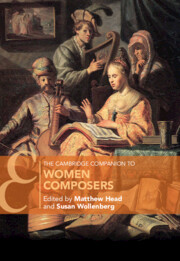
The Cambridge Companion to Women Composers
-
- Published online:
- 23 May 2024
- Print publication:
- 30 May 2024
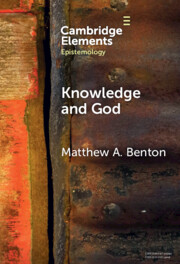
Knowledge and God
-
- Published online:
- 01 May 2024
- Print publication:
- 30 May 2024
-
- Element
- Export citation
4 - Congregation-Based Community Organizing
- from Part I - Organizing and Activism
-
-
- Book:
- The Cambridge Handbook of Community Empowerment
- Published online:
- 18 April 2024
- Print publication:
- 25 April 2024, pp 110-138
-
- Chapter
- Export citation
2 - Languages of Belief
-
- Book:
- Some New World
- Published online:
- 29 March 2024
- Print publication:
- 18 April 2024, pp 24-67
-
- Chapter
- Export citation
Chapter 3 - The Theology of the Book of Habakkuk
-
- Book:
- The Theology of the Books of Nahum, Habakkuk, and Zephaniah
- Published online:
- 28 March 2024
- Print publication:
- 04 April 2024, pp 104-172
-
- Chapter
- Export citation
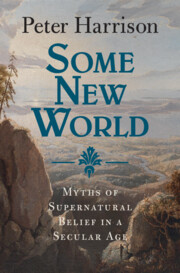
Some New World
- Myths of Supernatural Belief in a Secular Age
-
- Published online:
- 29 March 2024
- Print publication:
- 18 April 2024
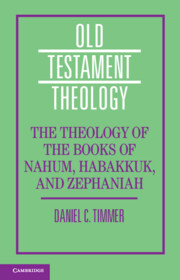
The Theology of the Books of Nahum, Habakkuk, and Zephaniah
-
- Published online:
- 28 March 2024
- Print publication:
- 04 April 2024
Thomas Aquinas on Non-Theological Faith
-
- Journal:
- New Blackfriars ,
- Published online by Cambridge University Press:
- 29 February 2024, pp. 1-14
-
- Article
-
- You have access
- Open access
- HTML
- Export citation
Human Beings and Ethics in the Thought of Herbert McCabe
-
- Journal:
- New Blackfriars / Volume 105 / Issue 3 / May 2024
- Published online by Cambridge University Press:
- 21 February 2024, pp. 294-308
- Print publication:
- May 2024
-
- Article
-
- You have access
- Open access
- HTML
- Export citation
An argument for the perspectival account of faith
-
- Journal:
- Religious Studies , First View
- Published online by Cambridge University Press:
- 12 February 2024, pp. 1-20
-
- Article
-
- You have access
- Open access
- HTML
- Export citation
Faith and the Absurd: Kierkegaard, Camus and Job’s Religious Protest
-
- Journal:
- Harvard Theological Review / Volume 117 / Issue 2 / April 2024
- Published online by Cambridge University Press:
- 12 February 2024, pp. 293-316
- Print publication:
- April 2024
-
- Article
-
- You have access
- Open access
- HTML
- Export citation
Chapter 2 - Secret Debts
-
- Book:
- The Theology of Debt in Late Medieval English Literature
- Published online:
- 04 January 2024
- Print publication:
- 18 January 2024, pp 50-81
-
- Chapter
- Export citation
The Method of Metaphysics and the Architectonic: Remarks on Gava’s Kant’s Critique of Pure Reason and the Method of Metaphysics
-
- Journal:
- Kantian Review / Volume 29 / Issue 1 / March 2024
- Published online by Cambridge University Press:
- 08 January 2024, pp. 115-124
- Print publication:
- March 2024
-
- Article
-
- You have access
- Open access
- HTML
- Export citation
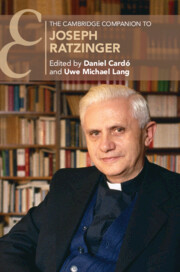
The Cambridge Companion to Joseph Ratzinger
-
- Published online:
- 25 January 2024
- Print publication:
- 21 December 2023
Chapter 10 - The Despair of Judge William
-
-
- Book:
- Kierkegaard's <i>Either/Or</i>
- Published online:
- 16 November 2023
- Print publication:
- 30 November 2023, pp 171-187
-
- Chapter
- Export citation
Faith as skill: an essay on faith in the Abrahamic tradition
-
- Journal:
- Religious Studies , First View
- Published online by Cambridge University Press:
- 29 November 2023, pp. 1-21
-
- Article
- Export citation
2 - Political Virtues?
-
- Book:
- Augustine on the Nature of Virtue and Sin
- Published online:
- 10 January 2024
- Print publication:
- 23 November 2023, pp 45-81
-
- Chapter
- Export citation
6 - God’s Justice and the End of the Torah
-
- Book:
- Paul and the Resurrection of Israel
- Published online:
- 02 November 2023
- Print publication:
- 23 November 2023, pp 221-270
-
- Chapter
- Export citation
13 - Religion in the Tokugawa Period
- from Part III - Social Practices and Cultures of Early Modern Japan
-
-
- Book:
- The New Cambridge History of Japan
- Published online:
- 15 January 2024
- Print publication:
- 23 November 2023, pp 443-477
-
- Chapter
- Export citation



